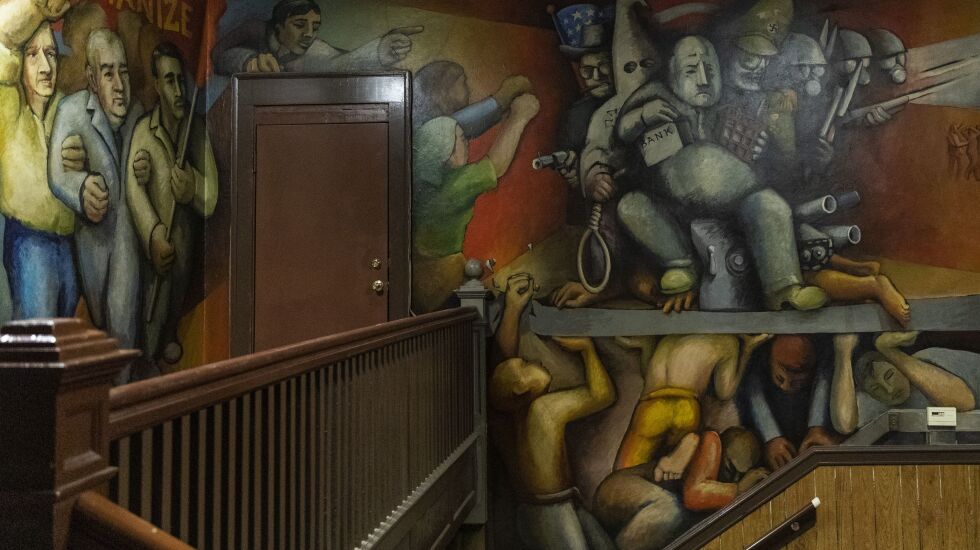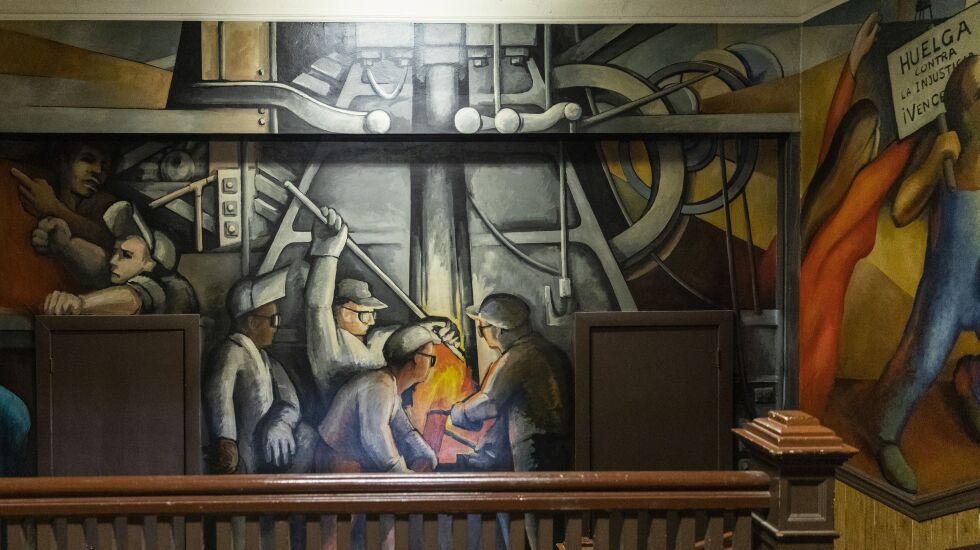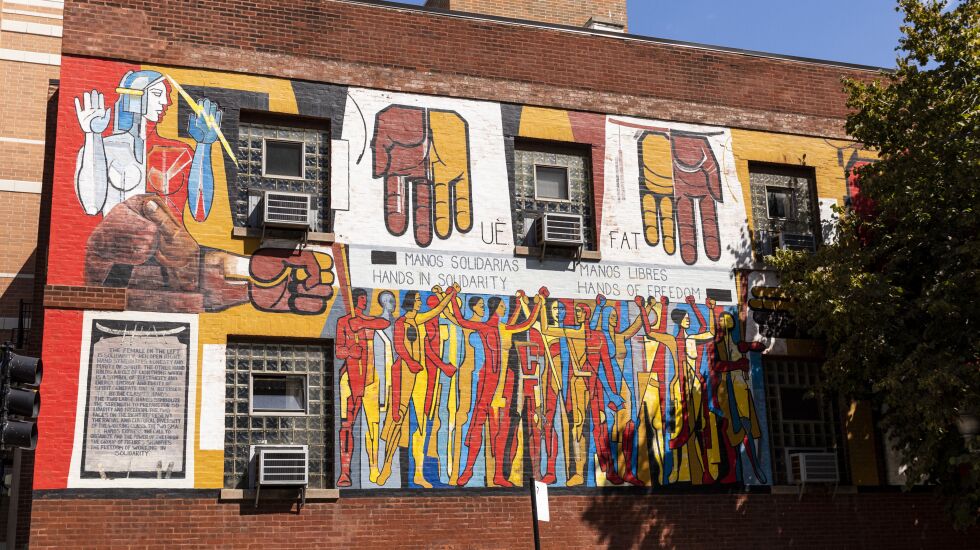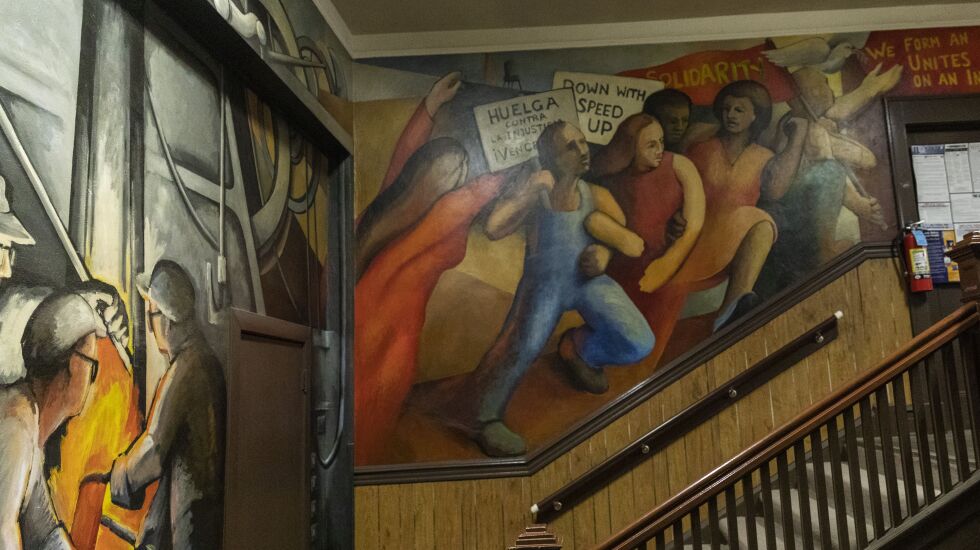
The “Solidarity” mural inside the United Electrical Workers union hall at 37 S. Ashland Ave. illustrates struggles and successes of working people.
In one scene in the mural, a Southern sheriff, a Ku Klux Klan member, an industrialist, a general and National Guard members are seen suppressing workers.
Other images show people of different races clasping hands, a cartoonish corporate boss being forced to sign a contract and union leaders handing leaflets to factory workers.
“It’s a classic because it’s the first and maybe the only” mural in Chicago “really dealing with union history, per se, in our generation,” says John Pitman Weber, the Chicago artist who painted it with the late Jose Guerrero in 1974.
Also, Weber says, “it’s unique compositionally,” winding around a staircase, bending with the walls and adjusting for doorways and corners.

But the mural — one of the oldest in the city — could end up being destroyed because the building is headed toward a likely sale and redevelopment.
If that happens, an outdoor mural on the building also would be lost. That one was done in 1997 by the late Mexican artist Daniel Manrique and shows people joining hands in solidarity and celebrating international unity among workers.

“The building is under contract, but there’s still a contingency for them to clear which won’t be resolved before mid-January,” the union’s Carl Rosen says. “If it all clears, we’ll be moving out by mid-March. We’re in the process of getting videos and good photos. We’re also exploring with Chicago Public Art Group whether there are some ways to physically preserve parts of the mural, although that doesn’t sound real hopeful.”

Weber and the late William Walker started became the Chicago Public Art Group in 1970 as a vehicle to create socially conscious public artwork.
The likely redevelopment of the site comes as new housing, restaurants and offices have sprouted in the area as downtown’s footprint has expanded through the West Loop and into the Near West Side.

Rosen says the union is selling “because the area has gentrified” and is “no longer a great location for a union hall — hard to park, etc. Don’t have the same needs for office space we used to have in part due to advent of virtual meetings. The building needs a lot of work — not accessible, etc. Instead, can invest the funds from the building sale in organizing at a time when workers are ready and willing to join unions.”
Many of the unions that used to be clustered near the United Electrical Workers hall have moved elsewhere.
The union represents about 35,000 workers nationwide ranging from sheet metal workers to scientists and librarians.
Rosen says that the developers may convert the building into townhomes or apartments.
“Yes, it’s bittersweet to leave the building. It’s been UE’s home in Chicago since 1947. Walking through the historic murals in the stairwell to get to our offices on the second floor has been a gift for decades. But we aren’t going far — we’ll be moving to space at another union hall not far away.”
Weber says of his mural, “If we can save part of it, that’d be great. I don’t think we can save more than a few parts, but I don’t know if we’re able to save any of it, so meanwhile we’re trying to get it documented as well as we possibly can.
“It’s just heartbreaking,” Weber says. “I understand it, but it’s heartbreaking.”







